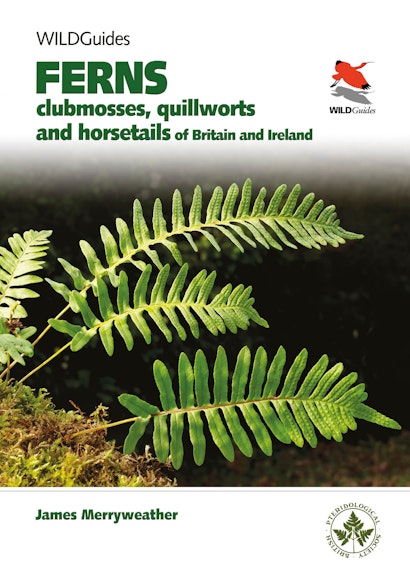This is a comprehensive, lavishly illustrated and user-friendly photographic identification guide to the fifty-seven ferns and seventeen other pteridophytes that occur in Britain. It is the perfect companion for botanists, naturalists, professional ecologists and anyone else with an interest in this fascinating group of non-flowering vascular plants. Designed to appeal to beginners and experts alike, this authoritative book includes novel identification keys and comparison tables that have been carefully devised to present only essential, easily understood technical terms and descriptions, avoiding jargon as much as possible. Cross-referenced throughout to facilitate the comparison of similar species, this definitive field guide is the go-to source for identifying these species with confidence.
- Features hundreds of stunning colour photographs
- Comprehensive coverage of Britain’s 57 species of ferns, 6 clubmosses, 3 quillworts and 8 horsetails
- Includes novel, easy-to-use, jargon-free identification keys and comparison tables
- Beautifully designed, user-friendly and accessible
Awards and Recognition
- Winner of the Presidents’ Award, Botanical Society of Britain & Ireland and Wild Flower Society
"An excellent book. . . . The conversational approach taken will engage with many readers getting to grips with these plants for the first time. It is, as it claims to be, user-friendly. The many photographs are good and well selected, the keys, hints and tips fine-honed, and the book looks handsome but robust enough to survive field use. It is strongly recommended."—Fred Rumsey, British Wildlife
"What makes this one stand out is its approach to demystify the intricacies and language of the botany of ferns. . . . I would recommend this book both to those with a passing interest and wish to know more as well as to someone who considers themself to be an expert."—Colin Ward, The Garden
"[Merryweather] is also a skilled photographer and this lavishly illustrated book is a kaleidoscopic distillation of knowledge and experience gathered over more than fifty years. . . . If you have any interest in the British flora, whether as a beginner or old hand, it is an essential acquisition, and quite exceptional value for money."—Ian M. Evans, Highland Naturalist
"Ferns is intended to provide a practical and functional approach to the identification of ferns, and it works! . . . There are distribution maps, notes of conservation status and reference to similar species for comparison. These entries are truly excellent and lift the book well beyond its central function of mere identification to one providing interesting, informative and enjoyable reading also."—Paddy Tobin, Irish Garden Plant Society
"WILDGuides simply do not make bad books and there is everything to admire here . . . it's as detailed as any birding field guide in pointing out salient features."—Bo Beolens, Fat Birder
"This is yet another ground-breaking WILDGuides initiative: as the first portable photographic field guide to British ferns, it really plugs a gap in the British identification literature."—Chris Sharpe, Curious Naturalist
"In his introduction James Merryweather says that this book might seem too bulky to be a comfortable pocket field guide; I would argue that the quality of this books will make people find a pocket big enough to carry it in the field."—Steven Rutherford, British Naturalist’s Association
"[An] attractive book, which is highly recommended."—Chris Page, Botanical Society of Britain and Ireland
"As beautifully designed and illustrated as one would expect from any WILDGuides title . . . Ferns is at once an accessible and essential identification guide for all levels of experience—and a thoroughly up-to-date compilation of pteridological knowledge that will inspire new interest in these fascinating plants."—Ian Jeffrey, Pteridologist
"Ferns provides a comprehensive and detailed coverage of Britain's ferns and horsetails which benefits from Merryweather's extensive experience of ferns in the field and of teaching others about them. The writing style is clear and to the point but enlivened with practical instructions, cautions, advice, asides, anecdotes and even humour. The photographs are of a remarkably high quality and the identification key invariably gets to the right answer although some might find it somewhat daunting initially. We can all learn something from this well-produced book, whether experienced pteridologist or beginner."—Adrian Dyer, former president of the British Pteridological Society
"This is a delightful, entertaining and very valuable guide, and packs a huge amount of information into bite-sized pieces that can easily be digested."—Mary Gibby, Edinburgh Journal of Botany
“If only we had had books like this when we were starting out all those years ago. I, for one, with no botanical training, had to learn all the jargon and there was so little detail, like how to tell the plants apart from each other. Both these fundamentals are well covered in the book, and I cannot see how it could be improved. It is such a leap forward, and I hope it gets the attention it sorely deserves.”—Pat Acock, British Pteridological Society

